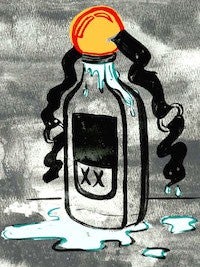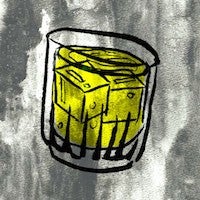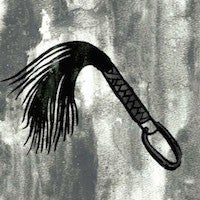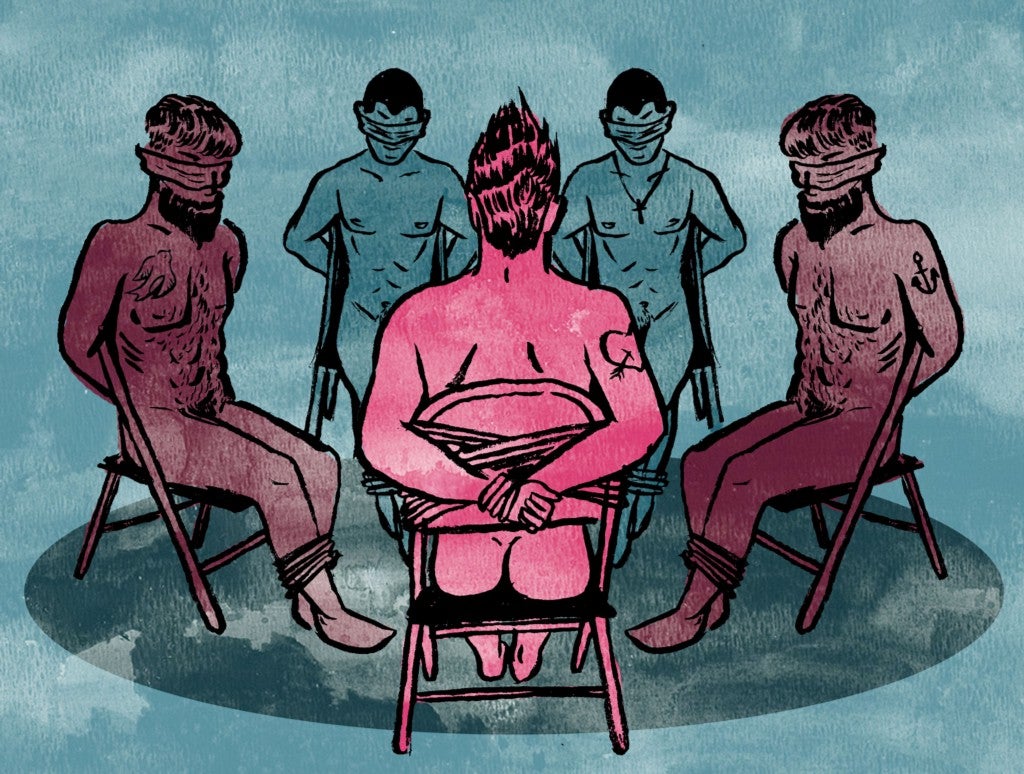It’s your turn to share. You look around the room. From the dominatrix in head-to-toe leather next to you to the business-suited sub across from you, they get it. You take a deep breath.
Welcome to Recovery in the Lifestyle, a 12-step fellowship program that caters to the BDSM set. Programs like Alcoholics or Narcotics Anonymous might pride themselves in sharing, but how open can you be if you’re afraid the junkie next to you will think you’re a degenerate because you like hot pokers stuck in your ass?
This is the predicament sober kinksters face. Public understanding of BDSM has come a long way, but stigma still keeps budding fetishists deep in the kink-closet. For many, substance abuse is a Band-Aid used to cover their main wound: how “wrong” they feel about their sexual preferences.
“I knew that I wasn’t wired quite the same way,” says Aarkey, a 45-year-old web developer whose all-American looks indicate little about his penchant for kink (or the pierced genitals underneath his khakis). Aarkey first started exploring his fetishes at the age of 13 and began self-medicating with alcohol and drugs not long after. “I was very ashamed,” he says, even after getting sober at 21 through a traditional AA program.

But eight years ago, one of the people he sponsored in AA introduced him to Recovery in the Lifestyle, which now boasts 13 regular meetings in nine states. The support from the community has helped Aarkey — who now serves as de facto secretary — keep sober ever since, in part because of the group’s ability to address issues of substance abuse that uniquely impact practitioners of BDSM. That includes, for example, “dealing with the endorphin high that comes from corporal play,” Aarkey explains, and then the crash that follows, known as “sub-drop.”
“Here’s the thing,” Aarkey says, summarizing learnings from group sessions. “Sub-drop is totally normal, everybody gets it. The thing is for those of us in recovery: that drop can trigger us to think about drinking and drugging again, in a way that other people don’t have to deal with.” Recovery in the Lifestyle ensures that without fear of judgment, you can pick up the phone and call a sponsor who has dealt with it.
Alcohol and drugs can play a dangerous role in many people’s vanilla sex lives, but a clear head can be particularly important when sexual play involves whips, paddles and nipple clamps (which is why so many BDSM-spaces demand full sobriety). Aarkey cites the bruises and burns he’d find a morning after going too far beyond his kinky comfort zone as some of the clearest evidence for why he needed to go sober. “There was one time [my girlfriend] tied me up, and she said she was burning the hairs off of me with her cigarette, but she was actually burning my skin,” Aarkey remembers. “I’ve never engaged in any of that stuff sober. That’s past the line of fun for me.”

For Tony—a 52-year-old sadistic dom from Chicago who’s been sober 20 years—BDSM fills an emotional hole. “Being involved in something that’s so interesting and engrossing has certainly made me feel like I’m enjoying and living an exciting, authentic life, instead of feeling desperate and getting high,” he says. “When I do a really good scene or have really intense S&M sex … I get the same kind of buzz and the same feeling of relaxation and excitement that I would get from using and drinking — without using or drinking.”
Comedian Kevin Allison describes his BDSM highs similarly. “I was much too fascinated by the dynamic between myself and another person and the roles we were digging into and the energy that we were exploring than I was the drugs and alcohol,” Allison says of his early experiences with BDSM. He started getting deep into the fetish community when he spiraled into addiction after a divorce and decided to attend Dark Odyssey, a pansexual kink camp. He wasn’t sober yet, but at Dark Odyssey, he found that his heightened sensory experiences overtook his need to self-medicate with “booze, pot and poppers.” He began pursuing complete sobriety soon after, as well as a whole new relationship with his sexuality. Shame about his desires had been a driving force behind his addiction, he realized. Openly embracing the extremes of kink was a part of his path to sobriety.

Unlike Aarkey and Tony, Allison decided to seek out a kink-friendly therapist to guide him along this path, as opposed to a group meeting. “I knew that there was a fetish or two of mine that any random therapist that I might pull out of a phonebook might really balk at and shame me for having.” Instead, the therapist he found was able to move past his sexual preferences and onto the underlying emotional issues, like depression and anxiety. “I think that part of what we do as kinksters is to dance with shame, and accept it a little more,” Allison says.
Though there are ties (likely leather) that bind recovering kinksters together, inside the BDSM community, there are as many different routes to sobriety as there are people getting sober. For Allison, Aarkey and Tony, their involvement in BDSM doesn’t just coexist with their sobriety, it fosters it. And that relationship is reflected in their ongoing recovery paths. Allison now hosts RISK!, a weekly podcast that allows people to tell their wildest stories about the things they’re ashamed of. Aarkey continues his work with Recovery in the Lifestyle, fostering a safe space for other sober fetishists. Tony is a social worker who speaks his truth through erotic fiction.
“The cuffs hold her up as she loses her balance and moans, and before she can orient herself or get a secure footing,” Tony writes in a passage that sums up the experience of kinky sobriety. “Her other knee draws up, she cries out, and I spin her more. This is why I bother to stay off substances, so I can fully be here. She knows me and inhabits my power and joy in the same way that I feel her shame, complicity, desire and desperation.”
